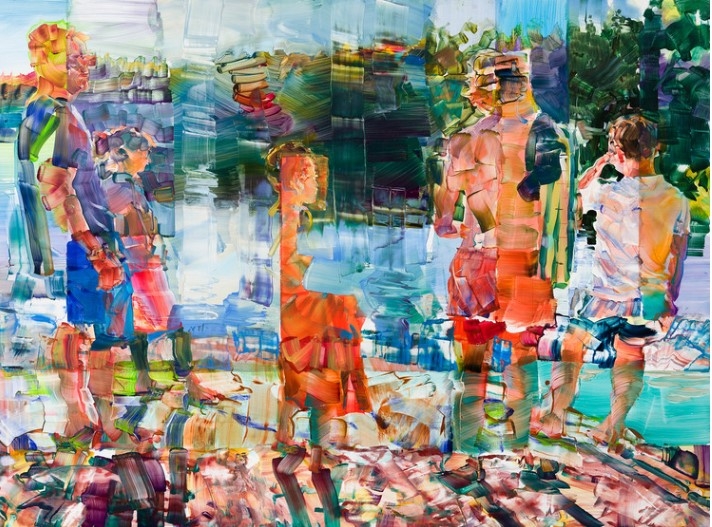The seriality of Wager’s paintings, either literally as repetitions of the same motif or in her cataloged, sober titles, indicates that Wager’s pictures are part of an index that goes far back in time. Her physical, seemingly impulsive and highly expressive method of painting, which takes place on the floor as in action painting, is regulated by a structure created through academic studies of the painting’s different traditions and methodical examination of various pigments, painting medium and painting tools. Unlike 19th-century painters, who were fascinated by the ability of new and exclusive photography to reproduce reality in sections, Wager has unlimited access to an endless ocean of photographic publishers.
In today’s photo chaos, some of us keep more photos on our phones than the total number of paintings painted during the Nordic Golden Age. Wager treats these sometimes seemingly meaningless images, often taken to reproduce moments we barely remember, with an insight that, in contrast to the ephemerality of the digital image, has taken her many years to develop. There is a great contrast between the photographic moment and the painting’s character as an organic and tactile universe that can be experienced through sensing. Nevertheless, some possible common, existential features in the painting are emphasized and the hobby photographer’s optimistic snap in Wager’s coat of paint, which may have been painted at random. They are not, but they cannot be explained either. They are intuitive, and part of a process that is not finished, but that goes through all her images.
Wager’s paintings are visually immediately accessible to everyone. But they are also intelligent paintings that discuss, sometimes argue about, the painting’s various roots and genres. Wager is known for painting wet in wet, field by field and alternately hefty and controlled. Her process is exclusively hand-based without any form of photographic reproduction. Photographic templates are routed up, and each route is interpreted freely in a corresponding, enlarged route on PVC sheet while other routes are covered. In this way, Wager robs herself of the opportunity for full control, in that she does not see the field next to the field she is painting. The painting becomes a multiverse of fragments, which are held together by the artist’s visual memory, which is the prerequisite for the technique to work.
Kira Wager (b. 1971 in Laxå, Sweden) grew up in Helsinki and moved to her family’s home country of Norway, where she studied at the Norwegian Academy of Fine Arts in Oslo. She has exhibited in galleries and museums in Norway and internationally since graduating from the Academy of Fine Arts in 1998, as RARE Gallery (New York) after receiving the ISCP (New York) scholarship in 2002. Wager has been purchased by a number of public and private collections , among others the National Museum and Trondheim Art Museum’s collection, the latter on the occasion that she was nominated for the Lorck Schive Art Prize in 2021. Wager painted the Storting’s gift for the royal couple’s 80th birthday and has, among other things, decorated DNB’s head office.




